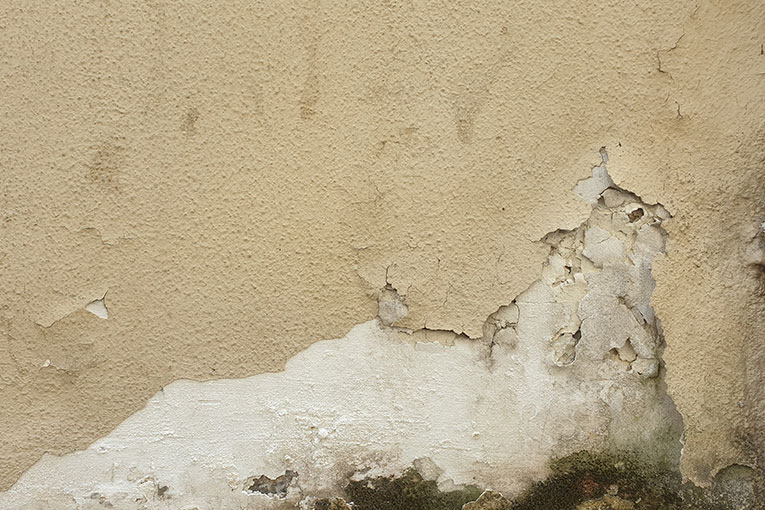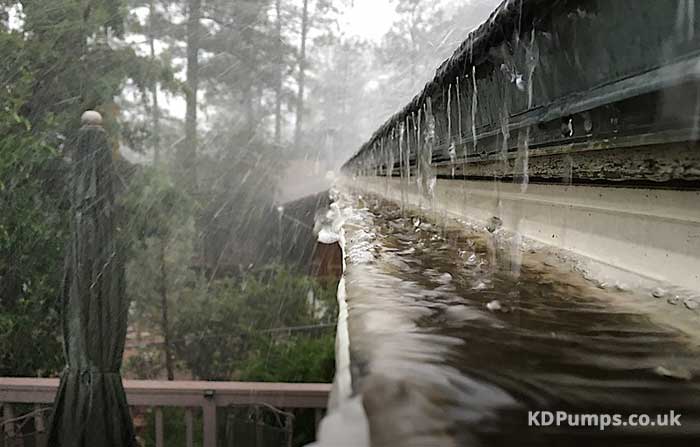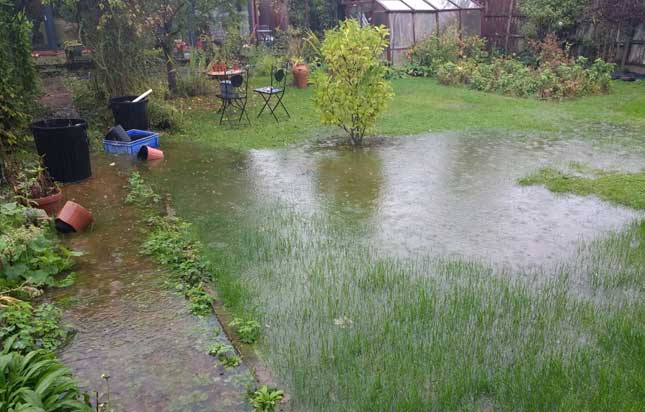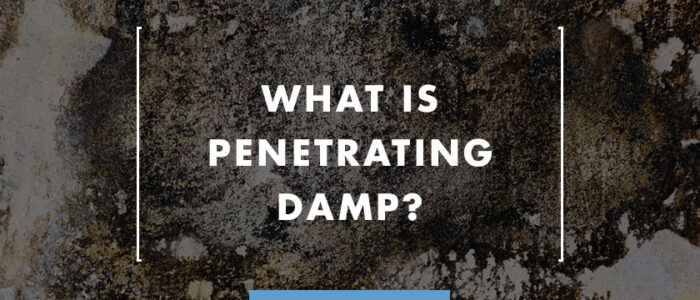What is Penetrating Damp?
Damp can ruin the safety and comfort of our homes, a hidden adversary lurking in the shadows, waiting to wreak havoc silently and unnoticed.
Among the various forms of damp that can invade our living spaces, penetrating damp stands as one of the most common and insidious.
In this article, we shall embark on a journey through everything about penetrating damp.
We’ll uncover exactly what penetrating damp is, but also equip you with the knowledge to identify its presence and causes.
You’ll be equipped to pinpoint the vulnerable areas where it frequently strikes, and most importantly, understand the crucial methods for its effective treatment.
We will also shed light on the potential health risks associated with penetrating damp.
It’s not merely a structural concern; penetrating damp can have implications for the well-being of those within the affected property.
Article Chapters
What is Penetrating Damp?
Penetrating damp is a subtle yet dangerous form of moisture infiltration that can plague the sanctity of our homes.
Unlike its rising damp counterpart, which creeps from the ground upward, penetrating damp is an intrusion from above through the building’s walls or roof.
This unwelcome guest gains access through structural imperfections or vulnerabilities.
It is often at its most formidable during or following bouts of heavy rain when external pressures on the building’s surfaces are most pronounced.
Picture a relentless downpour, and you might envision water cascading down your walls, seeping through even the tiniest cracks or defects in your home’s defences.
This unwelcome moisture then takes up residence within your walls, ceilings, or any permeable surface it encounters, potentially wreaking havoc on your living environment.
Understanding the intricacies of penetrating damp is vital to tackle this challenge head-on.
How is Penetrating Damp Identified?

Identifying penetrating damp is a task that requires a keen eye for subtle signs and a willingness to investigate.
One of the most apparent signs of penetrating damp is the presence of damp patches on interior walls or ceilings.
These patches can vary in size and shape, and they often have a darker or discoloured appearance compared to the surrounding areas.
Alongside damp patches, you might observe staining or watermarks on the affected surfaces.
These marks are telltale signs of moisture infiltration and can spread over time if left unaddressed.
Touched surfaces impacted by penetrating damp may feel noticeably colder and damper than unaffected areas.
This is a result of the moisture present within the building materials.
The moisture can cause paint or wallpaper to peel, bubble, or become detached from the underlying surface.
This is often an early indicator of a damp issue. In more severe cases, penetrating damp can create the ideal conditions for mould growth.
If you notice patches of mould on walls or ceilings, it’s a clear indication that dampness is present.
Wooden elements in your home, such as skirting boards or window frames, may start to show signs of rot or decay if exposed to penetrating damp over an extended period.
Sometimes, even before visible signs become apparent, you may detect musty or damp odours in affected areas, which can be a clue to investigate further.
Beyond interior signs, you may need to examine the exterior of your property.
Look for cracks in the walls, damaged or missing roof tiles, faulty guttering, or issues with external render, as these can serve as entry points for rainwater.
Identifying penetrating damp early is crucial to prevent further damage and tackle the issue at its source.
What are the Main Causes of Penetrating Damp?

Penetrating damp can arise from a variety of sources, each contributing to the infiltration of moisture into your home.
Recognising these potential causes is essential for effectively addressing and preventing this issue.
Here’s a more detailed look at the main culprits behind penetrating damp:
Faulty Roofs
Your roof is your home’s first line of defence against rainwater.
Damage to roof tiles, flashing, or poorly sealed joints can create openings for rainwater to infiltrate.
Even a small breach in your roof’s integrity can lead to a substantial increase in moisture over time.
Cracked Masonry
The exterior walls of your home, particularly brickwork, should provide a sturdy barrier against the elements.
However, cracks in the masonry can serve as pathways for moisture.
Even seemingly insignificant cracks can permit significant amounts of water to penetrate your home’s structure, especially during heavy rain.
Blocked Gutters and Downpipes
Gutters and downpipes are crucial for guiding rainwater away from your property.
When they become clogged with leaves, debris, or dirt, rainwater can overflow, running down the exterior walls.
This overflow can lead to significant dampness issues over time, as well as garden waterlogging.
Inadequate Seals Around Windows and Doors
Windows and doors are common entry points for rainwater if their seals are poorly maintained or have deteriorated over time.
Water can seep in around frames and sills, causing interior dampness and potential structural issues.
Defective Ventilation
Proper ventilation is critical for preventing moisture buildup inside your home.
Inadequate ventilation can trap moisture indoors, leading to damp problems.
This is particularly relevant in areas like kitchens and bathrooms, where moisture is generated regularly.
Excessive Ground Levels
If the ground level outside your home is higher than the internal floor level, moisture can be forced through the walls.
This often occurs in basements or properties built into sloping terrain, and can also lead to basement flooding.
Faulty Plumbing
Leaking or burst pipes within your home’s walls can introduce moisture, contributing to damp issues.
Regular plumbing inspections can help identify and address these issues promptly.
Understanding these potential sources of penetrating damp is the first step in effective prevention and mitigation.
By addressing these causes, you can protect your home from the damaging effects of moisture infiltration.
Where are Common Areas for Penetrating Damp?
Penetrating damp is a pervasive issue that can infiltrate various areas within a building.
It’s essential to be aware of these common locations where penetrating damp can manifest:
External Walls
Any defects or damage, such as cracks, gaps, or eroded brickwork, can create opportunities for moisture to enter your home.
Pay close attention to the condition of your external walls, especially after heavy rainfall.
Roof and Attic Spaces
Your roof and attic are vulnerable areas when it comes to penetrating damp.
Damaged roof coverings, such as missing or cracked tiles, and poorly installed or deteriorated flashings can allow rainwater to infiltrate.
Inadequate attic insulation can further exacerbate the issue by promoting condensation.
Chimneys
Chimneys can be a common source of penetrating damp.
Cracks in the chimney structure or inadequate flashing around the base can enable rainwater to enter your property.
Regular chimney maintenance is crucial to prevent dampness in this area.
Windows and Doors
Faulty seals or damaged frames around windows and doors are frequent entry points for rainwater.
If the seals around these openings are not well-maintained or have deteriorated over time, water can seep in, leading to interior dampness.
Regularly inspect and maintain the seals and frames of windows and doors.
Basements and Cellars
Basements and cellars are particularly susceptible to penetrating damp because they are often partially or fully below ground level.
Poorly waterproofed basements can allow groundwater to seep through walls and floors, leading to damp issues.
Adequate waterproofing and basement drainage solutions are essential for preventing dampness in these areas.
Bathrooms and Kitchens
Areas with high moisture levels, such as bathrooms and kitchens, are prone to condensation-related damp problems.
Inadequate ventilation can trap moisture indoors, leading to dampness, mould growth, and structural damage.
Proper ventilation, including exhaust fans and adequate airflow, is crucial in these areas.
Can Penetrating Damp Be Treated?

Image Credit: Shutterstock
Penetrating damp is a treatable issue, and the success of treatment depends on several factors, including the cause and severity of the problem.
Here are the key steps involved in treating penetrating damp:
Identify and Address the Source
The first and foremost step in treating penetrating damp is to identify and rectify the source of moisture infiltration.
This might involve a thorough inspection of your property to locate issues such as damaged roof coverings, cracked masonry, blocked gutters, blocked drains, or deteriorated seals around windows and doors.
Once identified, these issues should be promptly repaired to prevent further moisture spread.
Interior Repairs
After addressing the external causes, it’s essential to repair any interior damage caused by penetrating damp.
This can include damaged plaster, peeling paint, or deteriorated wall coverings.
However, before making these repairs, it’s crucial to ensure that affected areas are thoroughly dried to prevent future issues.
Adequate drying can often be achieved through natural ventilation, dehumidifiers, or fans.
Preventative Measures
To minimise the risk of future occurrences of penetrating damp, consider implementing preventative measures.
This may include improving insulation to reduce condensation, ensuring proper ventilation in moisture-prone areas like bathrooms and kitchens, and maintaining seals around windows and doors to prevent rainwater infiltration.
Regular property maintenance can go a long way in preventing damp issues.
Waterproofing
In more severe cases or properties with a history of recurring penetrating damp, it might be necessary to consider professional waterproofing solutions.
Waterproofing involves applying specialised materials or coatings to vulnerable areas, creating a barrier that prevents moisture ingress.
This is often performed by experienced contractors who can assess your property’s unique needs and provide tailored solutions.
It’s important to note that while some minor cases of penetrating damp can be addressed through DIY measures, more complex or recurring issues often require professional intervention.
herefore, consulting with a damp specialist or experienced builder is recommended.
They can assess the extent of the problem, determine the underlying causes, and develop a comprehensive treatment plan tailored to your specific situation.
Timely and effective treatment can help preserve the structural integrity of your property and prevent further damage caused by dampness.
Are there Health Risks with Penetrating Damp?
While penetrating damp itself is primarily a structural concern, it can indirectly affect health.
The damp environment it creates provides an ideal breeding ground for mould and mildew, which can pose health risks.
Prolonged exposure to mould spores can trigger or exacerbate respiratory problems, allergies, and other health issues.
Thus, it’s crucial to address penetrating damp promptly to prevent mould growth and mitigate health risks.
Conclusion
In the battle against dampness in our homes, understanding the enemy is half the victory.
Penetrating damp might sneak into our lives through cracks and crevices, but armed with knowledge, we can fight back effectively.
Remember, identifying the source, addressing it promptly, and taking preventative measures are your best allies in the quest to keep your home dry and mould-free.
While penetrating damp may pose challenges, it’s a battle that can be won, ensuring that your home remains a comfortable and safe haven for years to come.


Comments are closed.